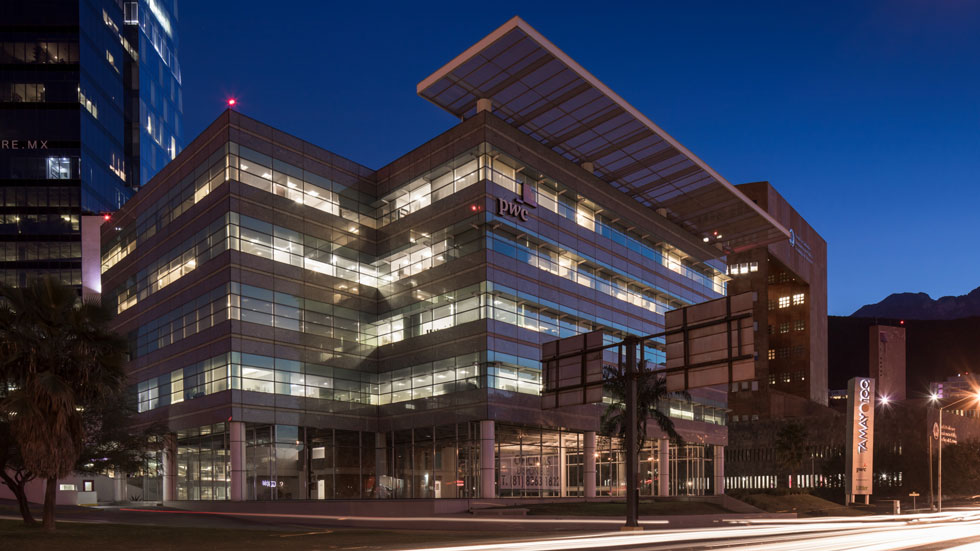Ahead of FIBRA Day 2023 on Sept. 7 in New York City, hosted by AMEFIBRA, the Mexican Association of Real Estate FIBRAs (REITs), REIT.com spoke to a range of FIBRAs about the major developments they see shaping their markets.
Fibra Mty (BMV: FMTY14) acquires and manages a portfolio of corporate properties with a focus on the office and industrial sectors. Fibra Mty CEO Jorge Avalos shared his thoughts with REIT.com.
How would you describe fundamentals in your sector of the commercial real estate market today, and for Mexico more broadly?
Jorge Avalos: As of today, almost 75% of our revenue comes from industrial sector properties located in the most important markets of northern Mexico, mainly in light manufacturing. Additionally, above 80% of our revenue is denominated in U.S. dollars and with inflation linked escalations. These fundamentals keep our position strong along with Mexico’s momentum, which has been receiving large amounts of foreign direct investment (FDI). For example, as of the end of the first quarter the FDI received by Mexico is equal to half of the inflows that came to the country during the whole of 2022—not just in new investments but also in reinvestments from companies that had already settled their operations in Mexico.
Where do you see the biggest growth opportunities for your company in the year ahead?
We continue to see growth in the industrial sector given Mexico’s current market size, labor costs when compared to other economies, numerous free trade agreements currently signed with foreign countries, the ongoing rental rate gap between some border markets, and the growth spillover into near-primary corridors due to land scarcity in main markets.
Having said that, we are active in primary markets, looking for opportunities in high quality assets at a price consistent with our cost of capital, which includes the right long-term internal rates of return. Also, we have interest in some markets such as Mexicali, Saltillo, and some regions in the Bajio area as we expect the market dynamics to grow stronger there in the upcoming quarters.
How active is the transaction market and to what extent are you involved?
Our pipeline has been steadily increasing, as we have mentioned in our recent earnings releases, although we’re very cautious in order to generate accretive results across our portfolio. Fortunately for us, our rigorous debt management and investors’ trusts have enabled us to keep growing without jeopardizing our capital structure. The Zeus portfolio transaction proves the case, as we nearly doubled our size, both in value and gross leasable area (GLA), without increasing our loan to value, which remains one of the strongest in the industry.
The Zeus Portfolio, which was acquired at our cost of capital, let us surpass a $1 billion market cap and reach the investment grade status which allows us to reduce our cost of debt and translate it into better risk-adjusted returns.
Can you describe the role that sustainability is playing in your overall strategy?
Sustainability has been in our DNA since the very beginning. A clear example is that we've been recognized two years in a row by Standard & Poor’s as the FIBRA with the best corporate governance according to their yearly ESG assessment. This score includes being the first internalized and advised FIBRA in Mexico, having one of the largest shares of independent members on the board, having the highest female representation on our technical committee in the industry, even when compared to U.S. industrial REITs, and working to constantly improve our governance with best-in class practices.
Our commitment doesn't stop there, we've been constantly reinforcing our environmental and social scores, for example increasing our certified GLA in properties with EDGE advanced, LEED core and shell, and LEED operation and maintenance certification. We also received recognition from the Institute for Market Transformation and the U.S. Department of Energy’s Better Buildings Alliance. For this year, Fibra Mty is the only Mexican leasing company to be recognized with the Gold Level.
In what ways has the nearshoring trend impacted your operations and are there particular adjustments you have made in response?
Fibra Mty is at the heart of nearshoring as 75% of our revenues come from industrial properties, and the majority are located in regions with the highest investment in nearshoring. Our current pipeline is larger than ever; in the last 12 months we've invested roughly $700 million in industrial real estate, translating into inorganic growth and portfolio strengthening in fundamental and strategic aspects. On the organic side, we've been receiving requests from our tenants to expand their current GLA at very attractive cap rates, and the ones we've signed as of today average around 10%. This not only increases both revenue generation and adjusted funds from operations (AFFO) per share, but it also allows us to reset the lease's schedule at a higher rental rate.
As for the adjustments we have had to make, it’s all about being faster and more creative in the opportunities that have risen. We've always thought of ourselves as strategic partners with our tenants, with a focus on increasing the relationship between parties. When the markets behave the way they've done recently, especially in an interest rate tightening environment, you have to be fast, creative, and efficient to help your tenant grow at a financial cost and return that makes sense. We believe these types of transactions will pay large dividends in the future, even when and if the market cools down.
What trends have you seen regarding international investment in FIBRAs and how active are you in terms of engaging with international investors?
We've been receiving lots of interest from both local and international investors. The combination of having surpassed the $1 billion market cap, and current market conditions, has resulted in our team scheduling frequent visits with banks and investors to our facilities. For the first time since our IPO, investors are coming to us and not the other way around.
It is important to acknowledge that nearshoring will have larger benefits in Mexico’s economy than what we've seen since the original U.S.–Mexico–Canada Agreement (USMCA) trade agreement was signed, not only in real estate, which may be the largest beneficiary naturally, but across other industries as well.
Is there an aspect to investing in FIBRAs that you wish was better understood?
If I could put it simply it would be that financial scrutiny and corporate governance matter. Even though real estate is a long-term investment, cash flow generation drives value, the right balance sheet with strong defensive fundamentals can be the difference to obtaining successful results, and the wrong governance policies can have many misalignments that could result in negative results for different stakeholders.
For students and professionals seeking out career opportunities in FIBRAs or commercial real estate, what advice would you give them?
Read and study the history and best practices of U.S. REITs. Keep an eye on what having the wrong governance or debt management can do to a REIT if the economy suffers a downturn. The U.S. has a deep market and a larger time horizon to analyze. The tools are available to you in so many ways—use them to your advantage.

